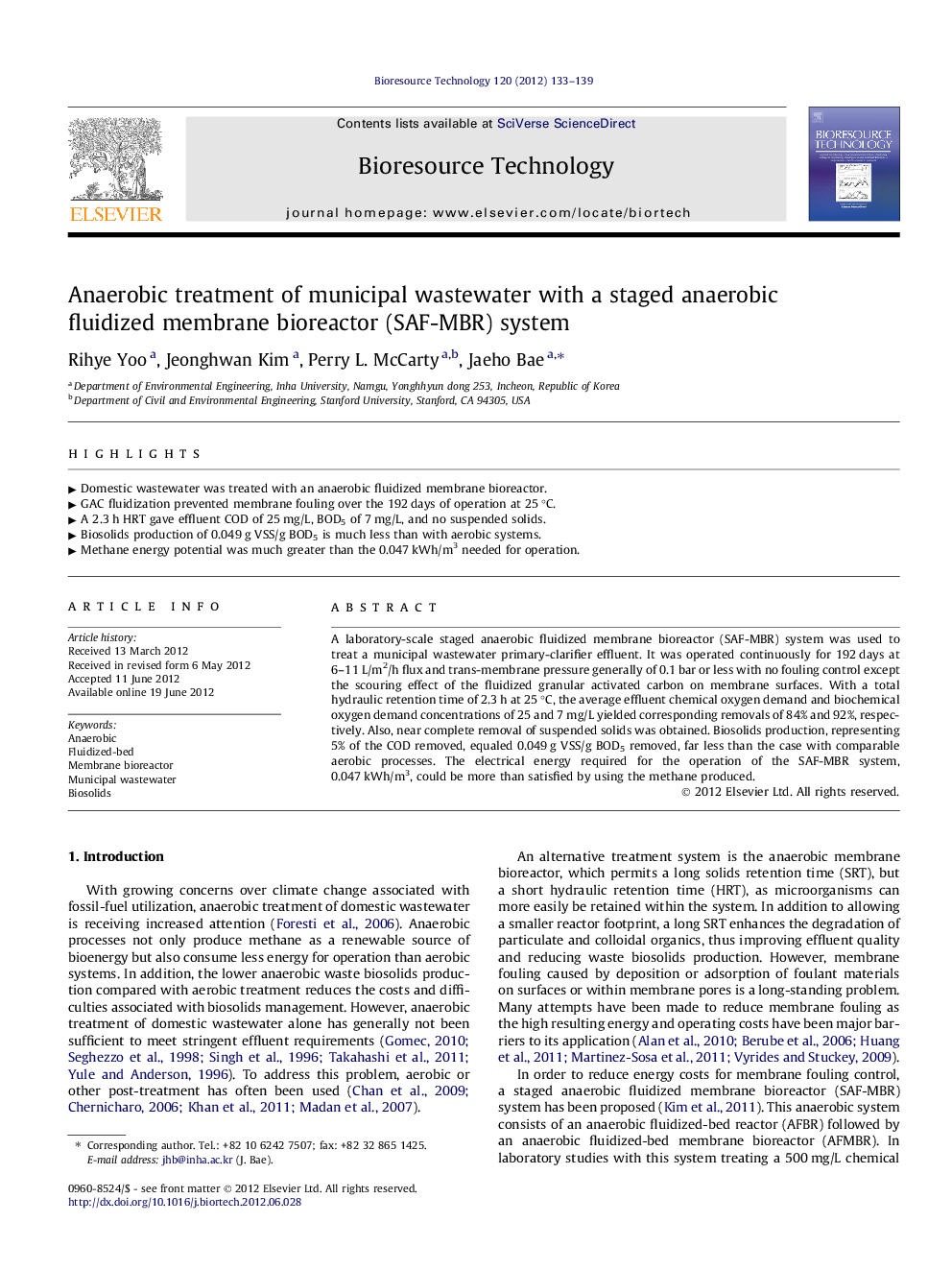| Article ID | Journal | Published Year | Pages | File Type |
|---|---|---|---|---|
| 681370 | Bioresource Technology | 2012 | 7 Pages |
A laboratory-scale staged anaerobic fluidized membrane bioreactor (SAF-MBR) system was used to treat a municipal wastewater primary-clarifier effluent. It was operated continuously for 192 days at 6–11 L/m2/h flux and trans-membrane pressure generally of 0.1 bar or less with no fouling control except the scouring effect of the fluidized granular activated carbon on membrane surfaces. With a total hydraulic retention time of 2.3 h at 25 °C, the average effluent chemical oxygen demand and biochemical oxygen demand concentrations of 25 and 7 mg/L yielded corresponding removals of 84% and 92%, respectively. Also, near complete removal of suspended solids was obtained. Biosolids production, representing 5% of the COD removed, equaled 0.049 g VSS/g BOD5 removed, far less than the case with comparable aerobic processes. The electrical energy required for the operation of the SAF-MBR system, 0.047 kWh/m3, could be more than satisfied by using the methane produced.
► Domestic wastewater was treated with an anaerobic fluidized membrane bioreactor. ► GAC fluidization prevented membrane fouling over the 192 days of operation at 25 °C. ► A 2.3 h HRT gave effluent COD of 25 mg/L, BOD5 of 7 mg/L, and no suspended solids. ► Biosolids production of 0.049 g VSS/g BOD5 is much less than with aerobic systems. ► Methane energy potential was much greater than the 0.047 kWh/m3 needed for operation.
